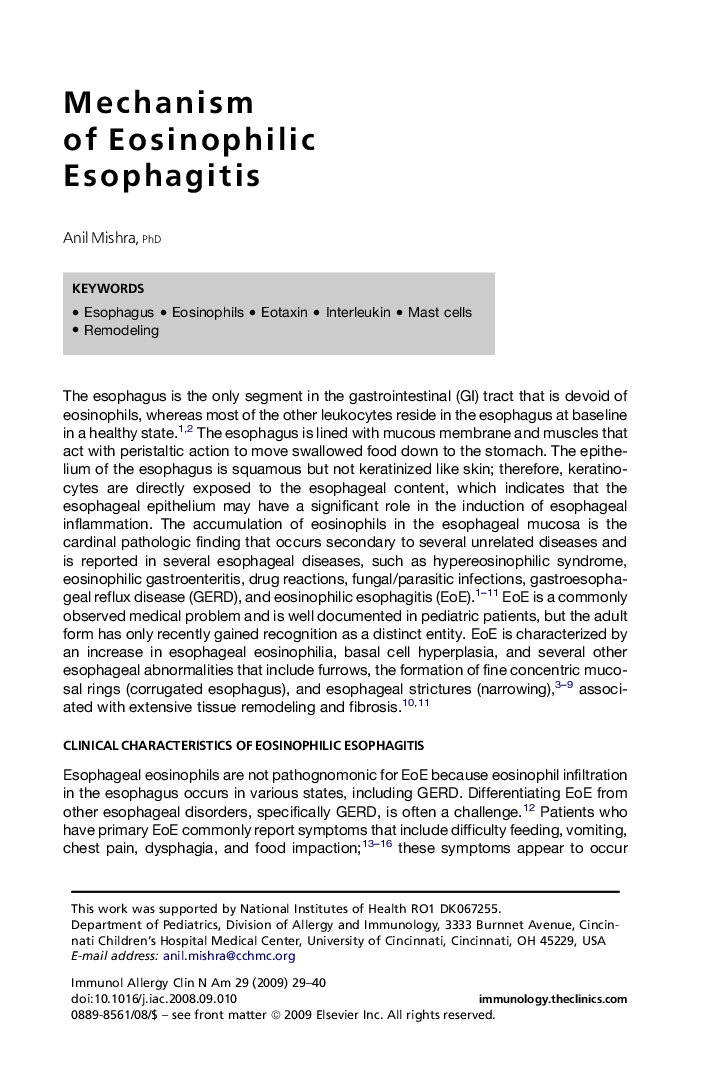| کد مقاله | کد نشریه | سال انتشار | مقاله انگلیسی | نسخه تمام متن |
|---|---|---|---|---|
| 3355046 | 1591450 | 2009 | 12 صفحه PDF | دانلود رایگان |

Eosinophilic esophagitis (EoE) is a newly recognized disease and is an emerging entity throughout developing and developed countries, including the United States. Therefore, understanding the causes, natural history, diagnosis, and management is important for future therapeutic interventions. The pathogenesis of EoE is still not clear, but a growing body of evidence has established that this condition represents a T-cell–mediated immune response involving several proinflammatory mediators and chemoattractants known to regulate eosinophilic accumulation in the esophagus, such as IL-4, IL-5, IL-3 and eotaxin-1, -2, and -3. Determining the mechanism or mechanisms through which human esophageal-derived factors ultimately induce the functional abnormalities observed, and to which antigens patients who have EoE are sensitized that lead to the manifestation of symptoms, is of significant interest.
Journal: Immunology and Allergy Clinics of North America - Volume 29, Issue 1, February 2009, Pages 29–40